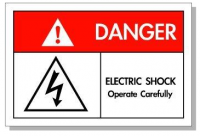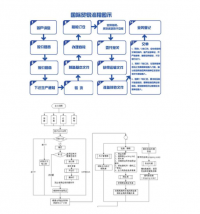非语言交流在商务谈判中的运用
摘要:语言是人类特有的现象,至今为止,还没有证据能表明其他任何一种动物掌握了系统、完整的语言。也正是由于这个原因,很多人认为语言是交流的最主要工具,在沟通中处于绝对的统治地位。这种看法是有一定的偏差的。研究表明,在具体的交往过程中,语言的作用往往没有那么重要。在日常交流中,大量信息是通过人体直接表达和传送的,仅有一成经由文字来进行,三成取决于语调、语气及声音,六成以上的信息是通过身体语言等非语言交流形式表达的。可见,非语言交流具有很强的交际功能。而且随着我国经济技术的不断发展,越来越多的人们能够参与到商务交流中,商务谈判在国际经济活动中日益频繁,非语言交流作为其中的一个特殊部分,在商务谈判中所起到的重要性越来越受到谈判者所重视。
关键词:非语言交流;商务谈判;运用
The Application of Non-verbal Communication in Business Negotiation
Abstract: Language is a unique human phenomenon. Up to now, there is no evidence that any other animal has a systematic and complete language. It is also this reason that many people think language is the most important tool for communication and is in absolute dominance in communication. There is a certain deviation in this view. The study shows that the role of language is often not so important in the process of communication. In daily communication, a lot of information is transmitted and transmitted directly through human body. Only 10% of them are written by text. 30% of them depend on intonation, tone and voice. Over 60% of information is expressed through body language and other forms of nonverbal communication. It can be seen that non-verbal communication has a strong communicative function. With the continuous development of economy and technology in China, more and more people to participate in business communication, business negotiation in international economic activities have become increasingly frequent. As a special part, nonverbal communication plays an increasingly important role in business negotiation.
Key words: Non-verbal communication; business negotiation; application
1 Introduction
Non linguistic began in nineteenth Century. In 1872, Darwin published a book called Human and Animal Expression, this discovery created a precedent of modern body language. Since then, many of his ideas and observations have been confirmed by researchers all over the world. The scientists observed and recorded about 100 kinds of nonverbal cues and signals, more and more people began to pay attention to the development of this discipline.
Psychologists through observation and rigorous studies found that the sound of silence is not only subjective but also the fact of science. The oral communication scholar Raymond Ross believes that in the interpersonal communication activities, only 35% of the total information obtained is the transmission of linguistic symbols, while the remaining 65% information is conveyed by nonverbal symbols.
Nonverbal communication refers to the use of various forms of communication other than human natural language to convey information and exchange thoughts and feelings. Language communication and nonverbal communication are complementary relationships.
2 Forms of Nonverbal Communication
Nonverbal communication can express rich and complex content in communication, which can make communication more comprehensive, complete and profound. Nonverbal can show attitude and emotion and shape personal image. In the practice of information exchange, non-verbal communication can not only play a role in coordinating and strengthening language communication, but also affect and regulate the direction and content of language communication. As a result, we can find that language communication and non-verbal communication are a complementary relationship. Specific non-verbal communication is divided into human language communication, time language communication, space language communication and environmental language communication.
2.1 Human Language Communication
Human body language is a form of nonverbal language communication through human expression, behavior and dress. It plays an important role in human communication. According to research statistics, the impression that people give to others 41% comes from the language of the human body.
In human facial expressions, eyes are the most communicating energy. The direction of sight communication represents different meanings. Line of sight down means tolerant and care, line of sight parallel means equality and appreciate, line of sight upward means respect and admire, line of sight sideways means hate and despise.
The eyebrows can also show emotional changes, people have different changes in their eyebrows when they express questions, excitement, horror and anger.
A smile is an expressive expression, it can convey friendly information. To do a good job of business communication, practitioners must learn to smile. Not only have a smile on the face, but also have a smile in your heart. In this way, we can truly create a harmonious and friendly relationship.
Body language refers to the language of the trunk and extremities. More important in business communication are head language, hand language and leg language.
Head is the important part in interpersonal communication. It is also the most concerned part of communication. Whether head language is appropriate or not plays an important role in the success of communication. A slight lift in the head is a sign of pride, but the head is too high to make people feel conceited. Head drooping often indicates a low mood. The head facing the communicator shows attention to him. A nod can express consent and comprehension; it also can express politeness and greeting. These actions changes according to the situation. Shaking the head always means reject and deny.
There are many kinds of hand language; the most frequently used is handshake. Handshaking is a common etiquette in modern society. According to the strength of the handshake and the length of the time, different information can be transmitted. Generally speaking, the master, the person with high identity, the woman and the elder reach out their hand first. The guest, the person with low identity, the man and the young people reach out their hand later. It is impolite to shake hands with the fingertips or the back of the hand and hand in gloves.
Leg language can also show emotions. When standing, the legs cross giving people the feeling of self protection or closed defense. On the contrary, the legs and arms open and the toes point to the conversation is a friendly conversation.
Dress language includes clothing, ornaments and make-up. A dress can transmit 10 kinds of information: economic level, educational level, social status, economic background, social background, educational background, and level of success, moral quality, trustworthy and vulgar. Therefore, clothing is not only a requirement of shelter or aesthetic needs, nor a purely personal behavior. It carries rich information in politics, economy and culture. As a general rule, in normal business communications, the basic requirements are plain, generous and solemn. The choice of ornaments should be coordinated with the environment, clothing and personal temperament. For professional women, make-up is a required lesson. Women’s make-up skills can show her social status, identity, taste and respect for other people in the workplace. In business communications, women’ make-up should be elegant and solemn.
2.2 Time Language Communication
Time is also an important form of non-verbal communication in business communication. Time factors in include the choice of communication time, the length of communication interval, the number of communication times, the length of each communication time and the sooner or later of meeting.
In actual communication, the communication of a lot of information is the decision of great matters. Therefore, when we communicate with important people in decision-making, we need to consider the question of finding the right opportunity for communication.
As for the time of communication interval, regular meetings of all departments at all levels are necessary within a company. This routine will play a role in timely communicating information and feelings. For the communication between the company and the outside world, it is necessary to maintain a certain frequency so that the stakeholder, the media and the public can continue to obtain the company’s information.
The number of the communication times depends on the relationship between the two parties and the purpose of communication. Every time of communication should be refined, short and more efficient.
Contents
1 Introduction 1
2 Forms of Nonverbal?Communication 2
2.1 Human?Language?Communication 2
2.2 Time Language Communication 3
2.3 Space Language Communication 4
2.4 Environmental Language Communication 5
3 Listening Techniques in Nonverbal Communication 5
3.1 Factors Affecting the Listening Effect 5
3.2 Effective Listening Skills 8
4 Nonverbal Communication in Cross Cultural Communication 9
4.1 The Meaning of Cross Cultural Communication 10
4.2 Nonverbal Differences in Cultural Communication 11
4.3 Nonverbal Communication Skills in Cultural Communication 12
5 Conclusion 12
Bibliography
[1] 罗伊·J·列维奇.International Business Negotiation[M].北京:中国人民大学出版社,2014.
[2] 汤普森.Business Negotiation[M].北京:中国人民大学出版社,2013.
[3] 罗纳德B阿德勒.The Art of Communication[M].北京:世界图书出版公司,2015.
[4] 马克态.商务谈判理论与实务[M].北京: 中国国际广播出版社,2004.
[5] 莫林虎.商务沟通与交流(第二版)[M]. 北京:中国人民大学出版社. 2014.
[6] 乔淑英,王爱晶.商务谈判[M]. 北京:北京师范大学出版社,2007.
[7] 夏新燕,徐娟玲.商务沟通[M]. 北京:中国铁道出版社,2016.
[8] 高琳,林宇乔.商务沟通与谈判[M]. 北京:化学工业出版社,2015.
[9] 吴兰.跨文化交际中的非语言因素[J].辽宁广播电视大学学报,2012(3).
[10] 刘兴倍.商务交流[M].北京:清华大学出版社,2017.






























